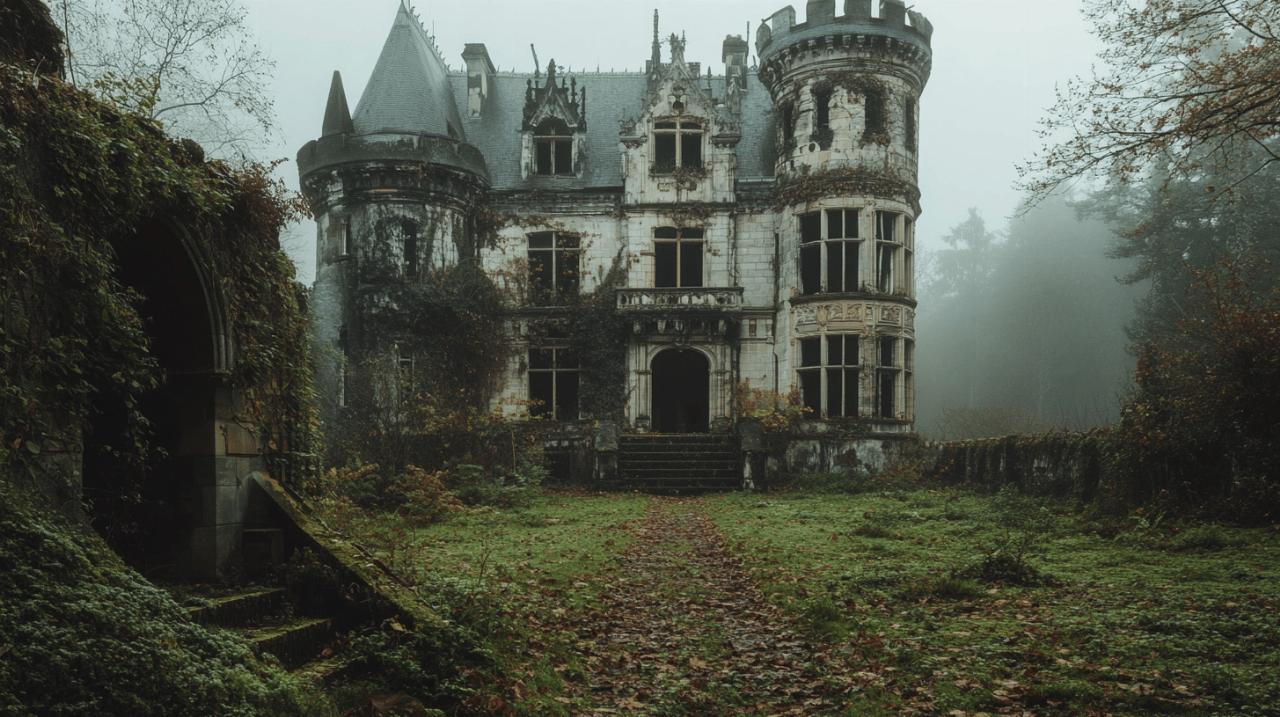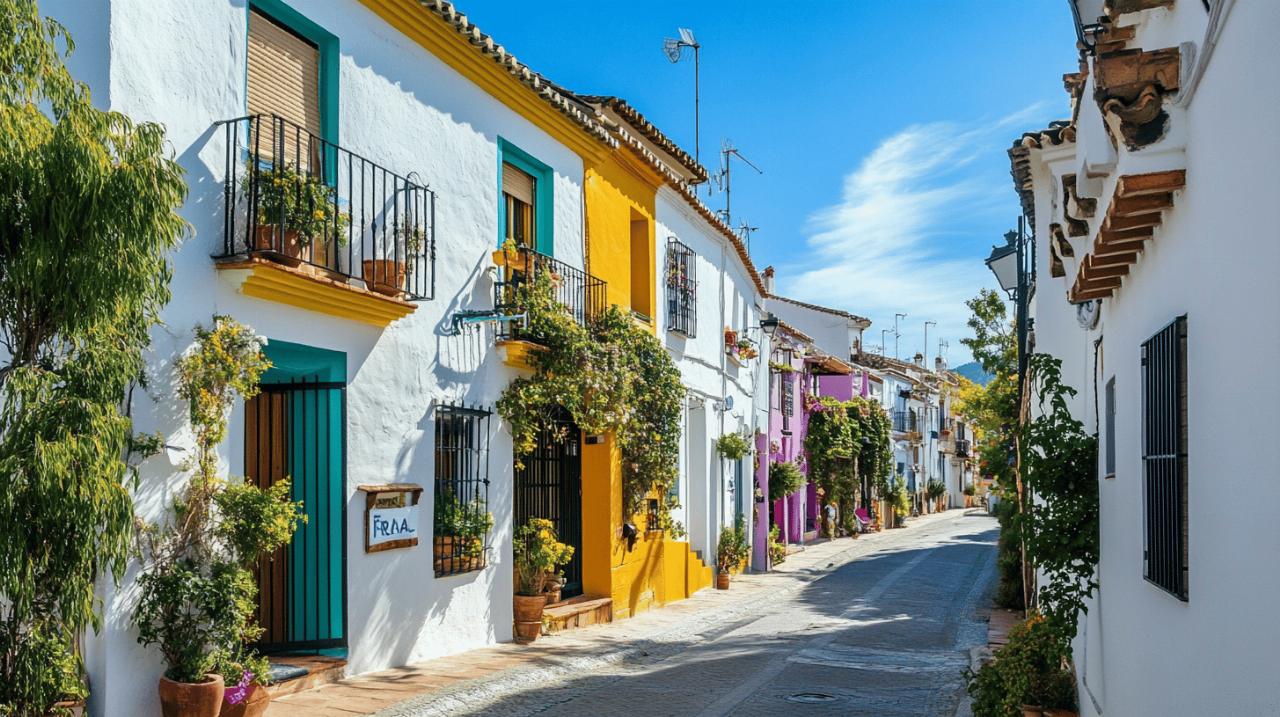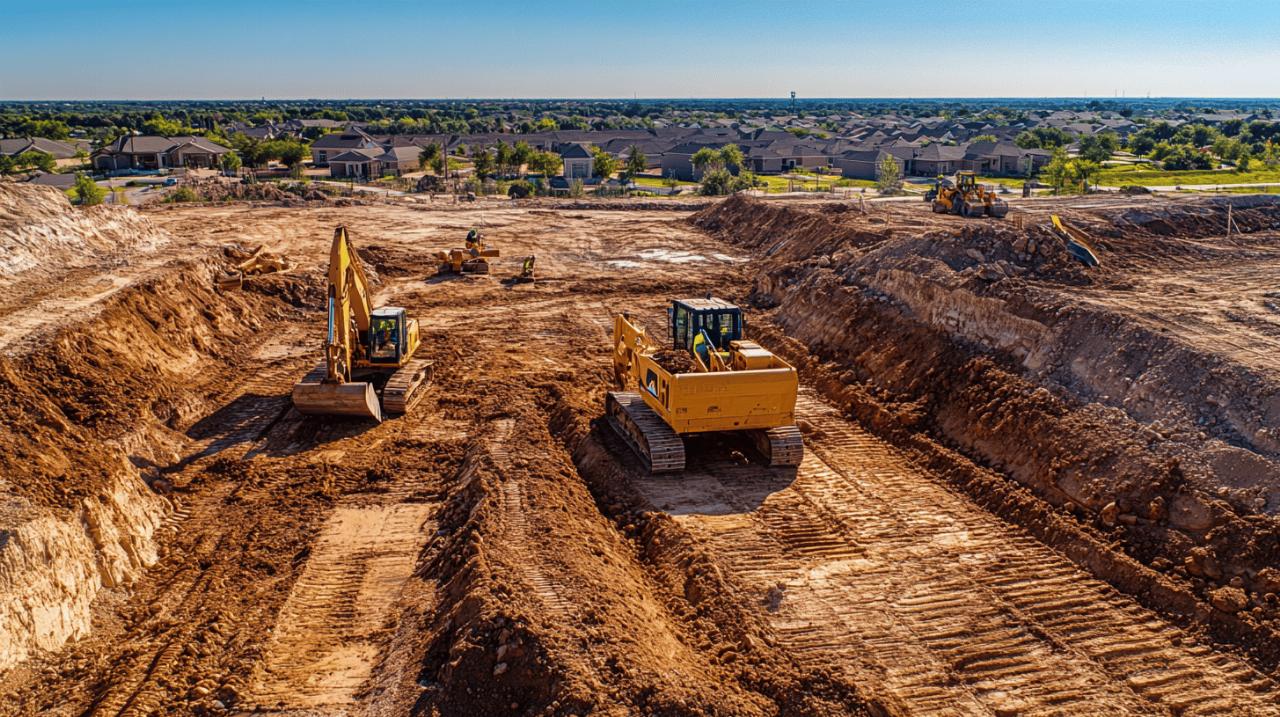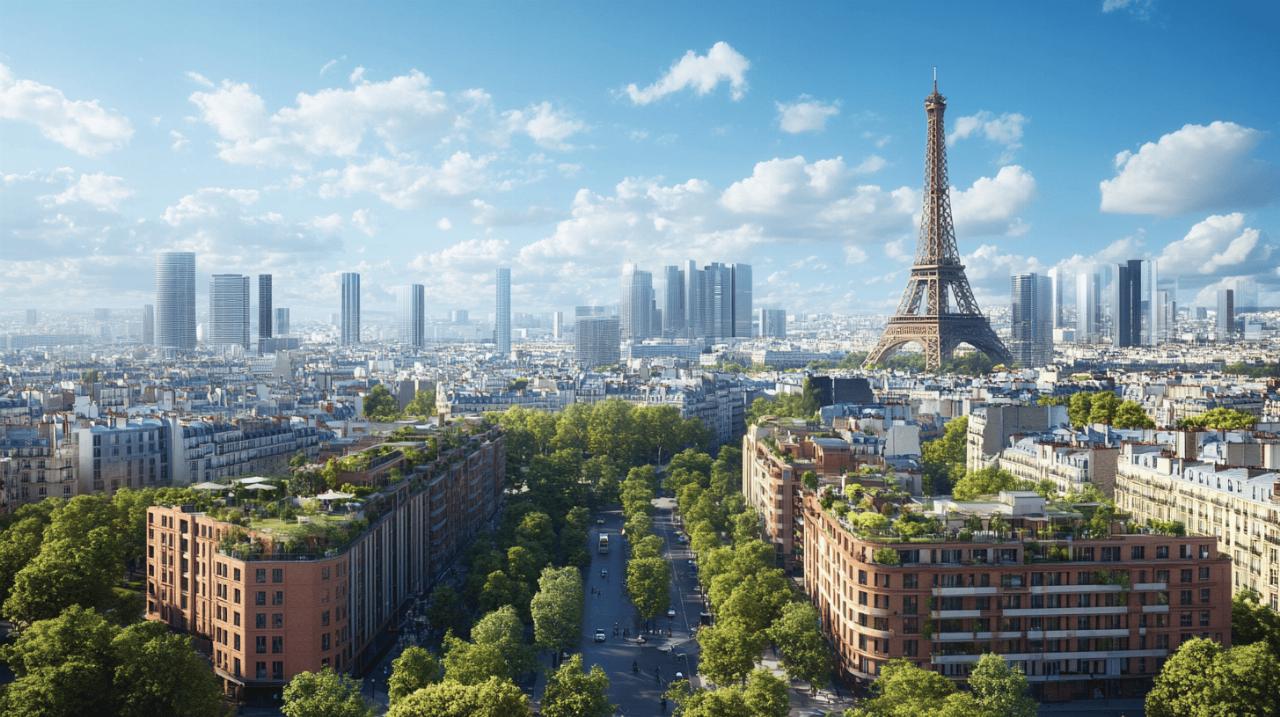The sprawling estates and grand châteaux that once defined the outskirts of Paris now stand in various states of decay, their crumbling façades and overgrown gardens telling tales of a bygone era. These forgotten monuments, scattered across regions like Val d'Oise and Seine-et-Marne, represent not only architectural heritage but also untapped potential for communities seeking greater access to green spaces and cultural venues. As urban sprawl continues to encroach upon the French countryside, the question arises: could these abandoned estates be transformed from relics of the past into vibrant public resources for the future?
The forgotten estates: mapping paris's abandoned château landscape
The regions encircling Paris are peppered with châteaux that have fallen into disrepair, their grandeur fading beneath layers of ivy and neglect. These estates, many of which date back centuries, were once symbols of wealth and power, inhabited by nobility and steeped in the history of the French Revolution and beyond. Today, they stand as silent witnesses to changing social and political landscapes, their abandonment often the result of economic challenges, inheritance taxes, and the decline of the agrarian economy that once sustained them. The shift towards urbanisation has only exacerbated this trend, as ancestral estates lose their appeal to modern lifestyles and the costs of maintenance become prohibitive.
Historic Hotspots in Val d'Oise and Seine-et-Marne
Val d'Oise and Seine-et-Marne are particularly rich in abandoned châteaux, offering a treasure trove for those interested in historical preservation and castle exploration. The Loire Valley, whilst slightly further afield, is home to iconic structures such as the Château de Chambord, a UNESCO heritage site built by King François I in 1519. Despite its status, even Chambord has experienced periods of neglect, underscoring the vulnerability of even the most celebrated monuments. Closer to Paris, the Château de Gros-Bois in Cher, constructed in the 16th century, was abandoned following the French Revolution and remains a poignant example of how political upheaval can reshape the fate of architectural heritage. Meanwhile, the Château de l'Ebaupinay, a medieval castle that had languished for centuries, is now being revived through community initiatives and crowdfunding efforts, demonstrating that restoration is possible with the right support.
The curious case of goussainville's decaying grandeur
Goussainville, situated near Roissy Charles de Gaulle airport, offers its own share of spooky splendour. The town's proximity to the airport has not shielded its estates from the broader trend of abandonment, with several châteaux falling into disrepair over the decades. The area around Saint-Denis, steeped in history and home to surprisingly neglected properties, further illustrates the extent of the issue. These estates, often entangled in legal puzzles or owned by families who have run out of resources, present both challenges and opportunities. For urban explorers, or the so-called urbex scene, these locations are irresistible, offering a glimpse into the past and a chance to document the beauty of decay. Yet, the ethical dilemmas associated with such exploration cannot be ignored, as trespassing on private property remains a legal and moral concern.
From Ruins to Revival: The Realistic Challenges of Château Restoration
Restoring an abandoned château is no small feat. The romantic notion of owning a slice of French history often gives way to the harsh realities of structural nightmares, damp, and the astronomical costs associated with bringing these buildings back to life. The Château de Gudanes in Ariège, purchased by an Australian couple in 2013, serves as a testament to the dedication required for such projects. Built between 1741 and 1750, the château has undergone extensive restoration, yet the work is far from complete. Each castle presents unique challenges, from stabilising crumbling walls to addressing centuries of neglect, and the financial burden can be overwhelming even for the most enthusiastic custodians.
Structural Nightmares and the True Cost of Renovation
The structural issues plaguing abandoned châteaux are often severe, with many buildings suffering from water damage, weakened foundations, and unsafe interiors. The Château de l'Herm in Dordogne, built in the late 15th century and featured in the novel Jacquou le Croquant, is a prime example of a picturesque ruin that would require significant investment to restore. Similarly, the Château de Boulogne in Ardèche, dating back to the 11th century, remains a hauntingly beautiful shell of its former self. The costs associated with such projects can run into the millions, encompassing everything from initial assessments to the hiring of skilled craftsmen capable of working with historical materials. For many potential buyers, the financial outlay is simply too great, leaving these estates to continue their slow decline.
Legal tangles and ownership puzzles worth untangling
Beyond the physical challenges, the legal landscape surrounding abandoned châteaux can be equally daunting. Ownership disputes, inheritance complications, and bureaucratic red tape often deter prospective buyers and restorers. In some cases, properties have been tied up in legal battles for decades, with no clear resolution in sight. The French government has attempted to address this through tax incentives and support for restoration projects, but the process remains fraught with difficulties. Organisations such as Dartagnans, a crowdfunding platform that allows people to become co-lords of historic estates, have emerged as innovative solutions to these challenges. By pooling resources and sharing ownership, such initiatives make château restoration more accessible whilst ensuring that these cultural treasures remain open to the public.
Beyond private ownership: how abandoned estates could transform public green space access
 The potential for abandoned châteaux to serve as public green spaces and cultural venues is immense. As urban areas become increasingly congested, the demand for accessible parks and outdoor spaces grows. Converting the grounds of these estates into public parks would not only address this need but also preserve the historical and architectural significance of the buildings themselves. The Château de la Plumasserie, a 19th-century manor about 50 miles from Paris, offers a glimpse of how such properties can be repurposed. Built in 1846, the estate now operates as a rental property, welcoming visitors to explore its gardens and grounds. This model could be expanded to include abandoned châteaux, transforming them into destinations that blend heritage with recreation.
The potential for abandoned châteaux to serve as public green spaces and cultural venues is immense. As urban areas become increasingly congested, the demand for accessible parks and outdoor spaces grows. Converting the grounds of these estates into public parks would not only address this need but also preserve the historical and architectural significance of the buildings themselves. The Château de la Plumasserie, a 19th-century manor about 50 miles from Paris, offers a glimpse of how such properties can be repurposed. Built in 1846, the estate now operates as a rental property, welcoming visitors to explore its gardens and grounds. This model could be expanded to include abandoned châteaux, transforming them into destinations that blend heritage with recreation.
Community heritage projects and preservation foundations
Community-driven preservation projects have proven to be effective in reviving abandoned estates. La Mothe-Chandeniers, an iconic ruined castle, has become a symbol of what can be achieved through collective effort. With the help of Dartagnans, the château has attracted thousands of co-owners who contribute to its restoration and upkeep. This co-ownership model not only distributes the financial burden but also fosters a sense of shared responsibility for cultural heritage. Preservation foundations, such as those supported by the Saving Castles organisation, play a crucial role in these efforts. Co-founded by Monte Schumacher, a seasoned antiques expert and history author, Saving Castles brings medieval history and castle exploration to life through immersive content and advocacy. These organisations provide resources, guidance, and funding opportunities for aspiring château custodians, making restoration projects more feasible.
Converting Forgotten Grounds into Accessible Parks and Cultural Venues
The transformation of château grounds into public parks and cultural venues offers numerous benefits. These spaces can host events, exhibitions, and educational programmes, attracting tourists and locals alike. Cultural tourism, when balanced with conservation efforts, can generate revenue that supports ongoing maintenance and restoration. The Normandy region, with its wealth of historical sites, has successfully leveraged this model, drawing visitors interested in exploring the area's rich past. Abandoned châteaux near Paris could follow suit, becoming destinations that celebrate French history whilst providing green spaces for communities to enjoy. The Château de Vibrac in Charente, which dates back to the 11th century and played a role in the Hundred Years' War, is one such property that could benefit from this approach. By opening its grounds to the public and hosting cultural events, the château could secure the funding needed for ongoing preservation.
The urban explorer's ethical dilemma: appreciating heritage whilst respecting boundaries
The growing popularity of urban exploration, or urbex, has brought renewed attention to abandoned châteaux, but it also raises important ethical questions. Whilst documenting these decaying structures can help raise awareness of their plight, entering private property without permission is illegal and potentially dangerous. Many châteaux are structurally unsound, with unstable floors, collapsing ceilings, and hidden hazards that pose serious risks to explorers. Responsible exploration requires obtaining permission from property owners, wearing sturdy footwear, and never venturing alone. For those unable to secure access, virtual tours and content created by organisations like Abandoned Nordic offer a safer alternative.
The growing 'urbex' scene and responsible exploration practices
Abandoned Nordic, a group from Helsinki, Finland, has gained recognition for their immersive photography and storytelling centred on forgotten places. Their collaboration with Dartagnans allowed them to explore and document several châteaux, including La Mothe-Chandeniers and the Château de l'Ebaupinay, whilst supporting restoration efforts. This partnership highlights the potential for urbex enthusiasts to contribute positively to preservation initiatives. By working with organisations dedicated to saving these estates, explorers can help generate interest and funding for restoration projects without trespassing or causing harm. The best time to visit these sites, when permission has been granted, is during spring or autumn, when the weather is favourable and the grounds are at their most picturesque.
Professional resources for aspiring château custodians
For those seriously considering taking on the challenge of château restoration, professional resources and expert guidance are indispensable. Estate agents who specialise in unique properties can provide valuable insights into the market, whilst preservation foundations offer advice on navigating the legal and logistical complexities of restoration. The Château de Peyrepertuse in Aude, dating back to the 11th century and often referred to as a celestial citadel, is one example of a property that has benefited from expert intervention. Aspiring custodians should also familiarise themselves with available tax incentives and funding opportunities, as these can significantly offset the costs of renovation. Organisations like Dartagnans and Saving Castles provide platforms for crowdfunding and community engagement, making it possible for individuals and groups to participate in the preservation of France's architectural heritage. With the right support and a commitment to responsible stewardship, abandoned châteaux can be transformed from crumbling relics into vibrant spaces that enrich public life and celebrate the grandeur of the past.





